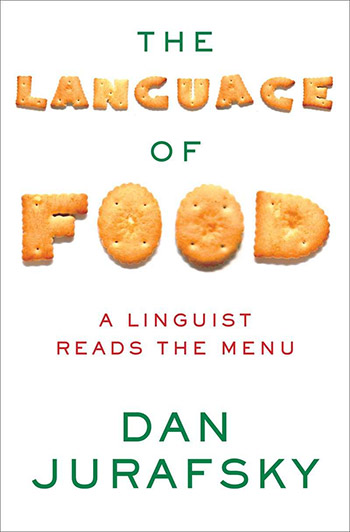The confusing history of the naming of the domestic turkey—a bird that originated in the Americas—was often mistaken in Europe for a Guinea fowl from Ethiopia, was therefore given the name of all sorts of other exotic countries, and then was brought back to America with early settlers again-is one of many delectable topics in Dan Jurafsky’s book The Language of Food.
His book touches on many of the themes that we were so excited about in our soup travels. Particularly the idea that recipes are a sort of cultural DNA, and that by following the history of our dishes and their shifting ingredients, we see our complex heritage, and the many ways our paths have crossed and recrossed throughout time.
Take the very word “soup,” which is related to “supper,” and also connected to the history of the celebratory “toast”:
“In the Middle Ages, slices of toast soaked in wine, water, or broth, called sops, were often used as a way to add heat, flavor and calories to hot liquids like broth or wine… the earliest written recipes mentioning toasted bread or toast in English all describe slices of bread toasted and then served “all hot” soaked in wine and spices…. In fact, the word sop, perhaps via its sixth-century late Latin relative suppa, gave rise by the tenth century to the Old French word soper (to have supper) and soupe, from which come our words supper and soup. Soup first meant the soaked toast, and then generalized to mean the broth eaten with it…”
(Fittingly, our World Soup this week is Wild Rice & Turkey. Come check it out!)
And because a toast was soaked in the wine or soup, we came to call a “toast” a celebratory drinking to someone’s health. So, when you give thanks and toast your friends and family this Thursday, you can also be thankful you don’t have soggy bread in your wine anymore!
Jurafsky, an unabashed lover of Thanksgiving, also talks about the history of pumpkin pie: a perfect example of how fusion cuisine is far from new.
“Like the mestizo mole, the sweet dishes that grew to symbolize Thanksgiving combine New World ingredients (cranberries, sweet potatoes, pumpkins, pecans) with the medieval spices, sweet and sour flavors, and custards that date back to the Arabic influence on Andalusia and Italy.”
Jurafsky also digs up the earliest known written pumpkin pie recipe, in the first cookbook written by an American: Amelia Simmons’ 1796 American Cookery.
Pompkin.
One quart stewed and strained, 3-pint cream, 9 beaten eggs, sugar, mace, nutmeg, and ginger, laid into paste… and baked in dishes three-quarters of an hour.
Our recipe is only slightly improved, we hope.


